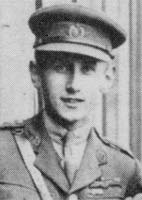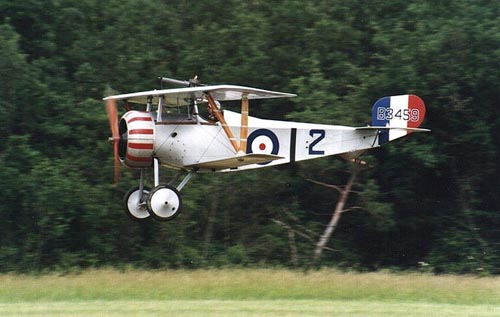
Nieuport 17/23 Scout Replica in the markings B’3459 Captain Philip Fletcher Fullard No.1 Sqn RFC Bailleul Aerodrome September 1917. Fullard shot down 17 enemy aircraft in this aircraft. Photographed at IWM Duxford. Source http://www.airmuseumsuk.org/
Philip Fletcher Fullard was born in May 1897. As a school boy he played as a centre half for Norwich City’s reserve team, but by 17th November 1917 at the age of , aged 20 he was one of the leading British fighter aces serving in No 1 Squadron RFC. Since joining No1 Squadron RFC in May 1917 he had shot down forty enemy aircraft. At that time only four fighter pilots had shot down more aircraft. Baron von Richthofen had shot down 60, Georges Guynemer 53, Werner Voss 48 and Albert Ball 44.

He joined the army in 1915 after leaving King Edward VI’s Grammar School school Norwich and qualified as a pilot in December 1916. He was a natural athlete who captained his school’s Hockey and football teams. He had an aptitude for flying which was reflected inhis first appiontment as a newly qualified pilot – to instruct others during the spring of 1917. He joined No1 Squadron RFC in May 1917. His squadron flew what was by 1917 an an obsolescent aircraft, the Nieuport 17. With this he took on faster and more heavily armed enemy aircraft. Overt the Summer of 1917 he was part of the Allied air effort to secure air superiority over the Ypres Salient. Without air superiority Allied spotter aircraft could not find the enemy or spot artillery fire. Whatever the failings and costs of the 3rd Battle of Ypres, the air battle was a success for the Allied air forces.
His achievements as a fighter pilot did not go unrecognised. (1) He was awarded a the Military Cross, (MC) twice, and the Distinguished Service Order (DSO) The citations for these awards refer to his “conspicuous gallantry and devotion to duty when engaged in aerial combat.” The number of occasions on which he attacked and destroyed enemy aircraft; his fine leadership, great dash and determination to close with the enemy. His DSO recognised that “as a patrol leader and scout pilot he was without equal” and mentioned that “the moral effect of his presence in a patrol is most marked.” Not merely a fighter ace, but also a good leader.
Flying was difficult and dangerous, Fullard had some narrow escapes.(2) When fighting a German two-seater, his goggles were shot away from his eyes. The signalling lights in his machine caught fire and set the woodwork of the aeroplane alight. Fire must have been one of the nightmares of the era before parachutes were worn, and faced with the choice of jumping to your death or being burned alive. On this occasion Fullard managed to get his burning machine back to the British lines

On the 17 November 1917 he broke his leg playing football for the squadron against an infantry battalion and took a year to recover. This compound fracture ended his career as a footballer and as a fighter pilot. By the end of the war his total of 40 kills had been eclipsed by British pilots such as Mannock, 61 kills, McCudden; 57 kills , McElroy; 47 kills and Hazell, 43 kills. (3)

However, even by the time his fighting career had ended Guynemer, Voss, Ball were already dead and by the end of the war, von Richthofen, and November 1917 by the end of the Great War von Ricthofen, Mannock, McCudden , McElroy were all dead as well. Philip Fullard was the second highest scoring British ace to survive the Great War. The footballing injury which ended his career, it also may have saved his life. While Fullard does not attract the same attention as other sportsmen who fought in the Great war, flying as a fighter pilot was statistically more risky than winning a VC.
Fullard stayed in the Royal Air Force after the end of the Great War and rose to be an Air Commodore, serving as a staff officer and commander in the Second World War. He retired form the RAF in 1949 and died in 1984. This may make him unique footballing statistic for a second reason. As well as being the only man who have played football for a for a second reason. As well as being the only fighter ace who played football for an English League club, he might also be the footballer who has achieved the highest rank in the armed forces.

